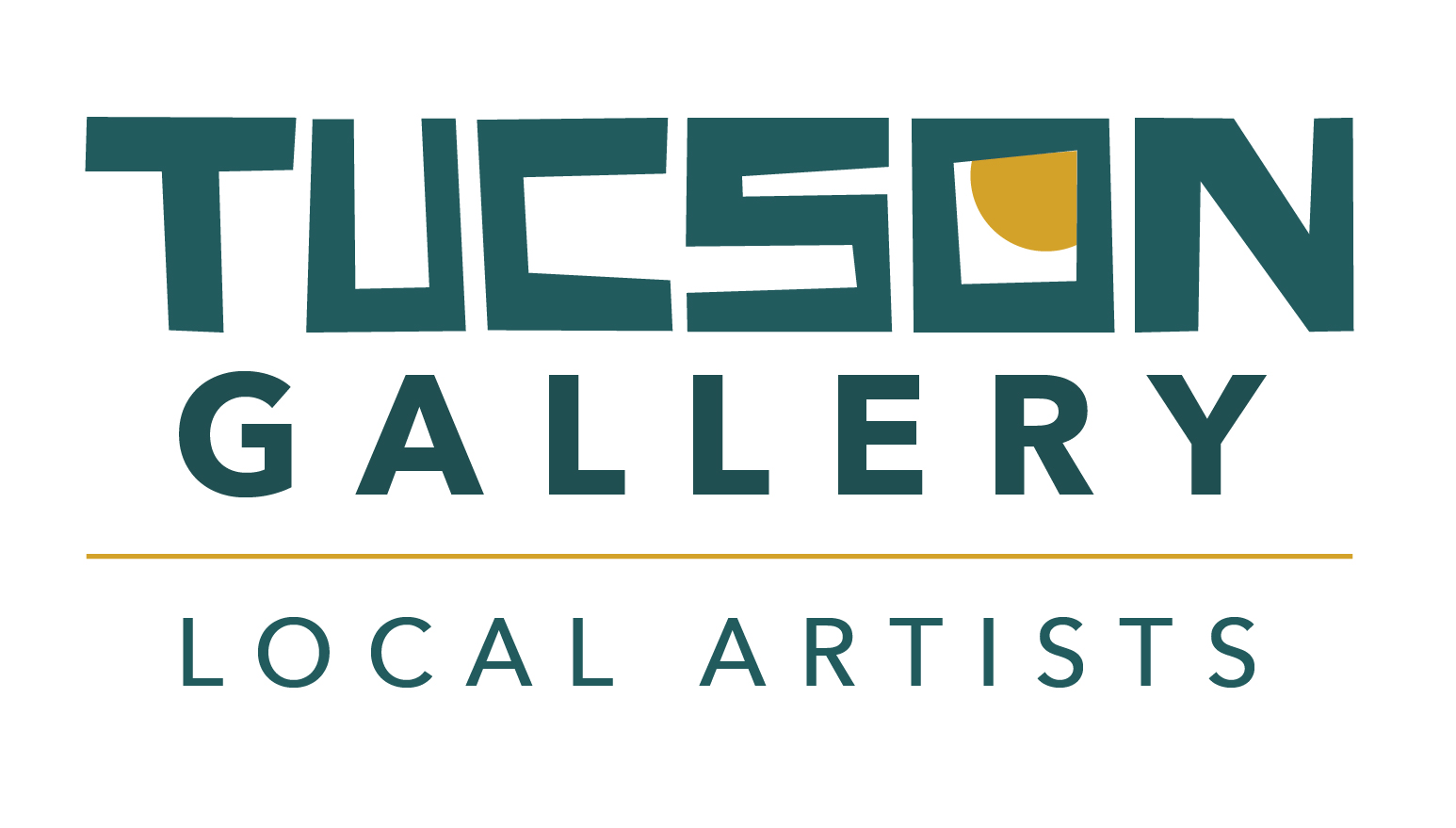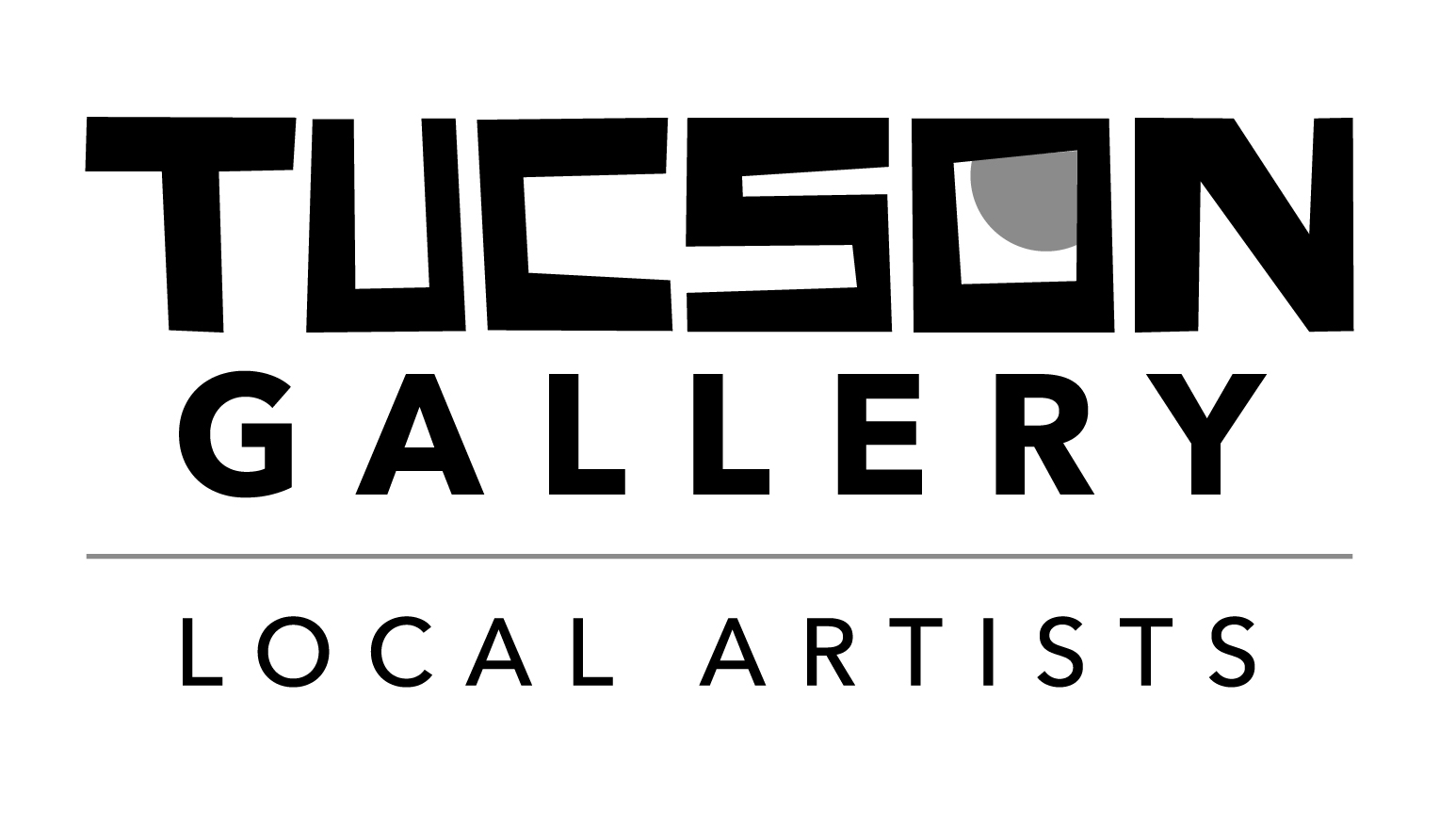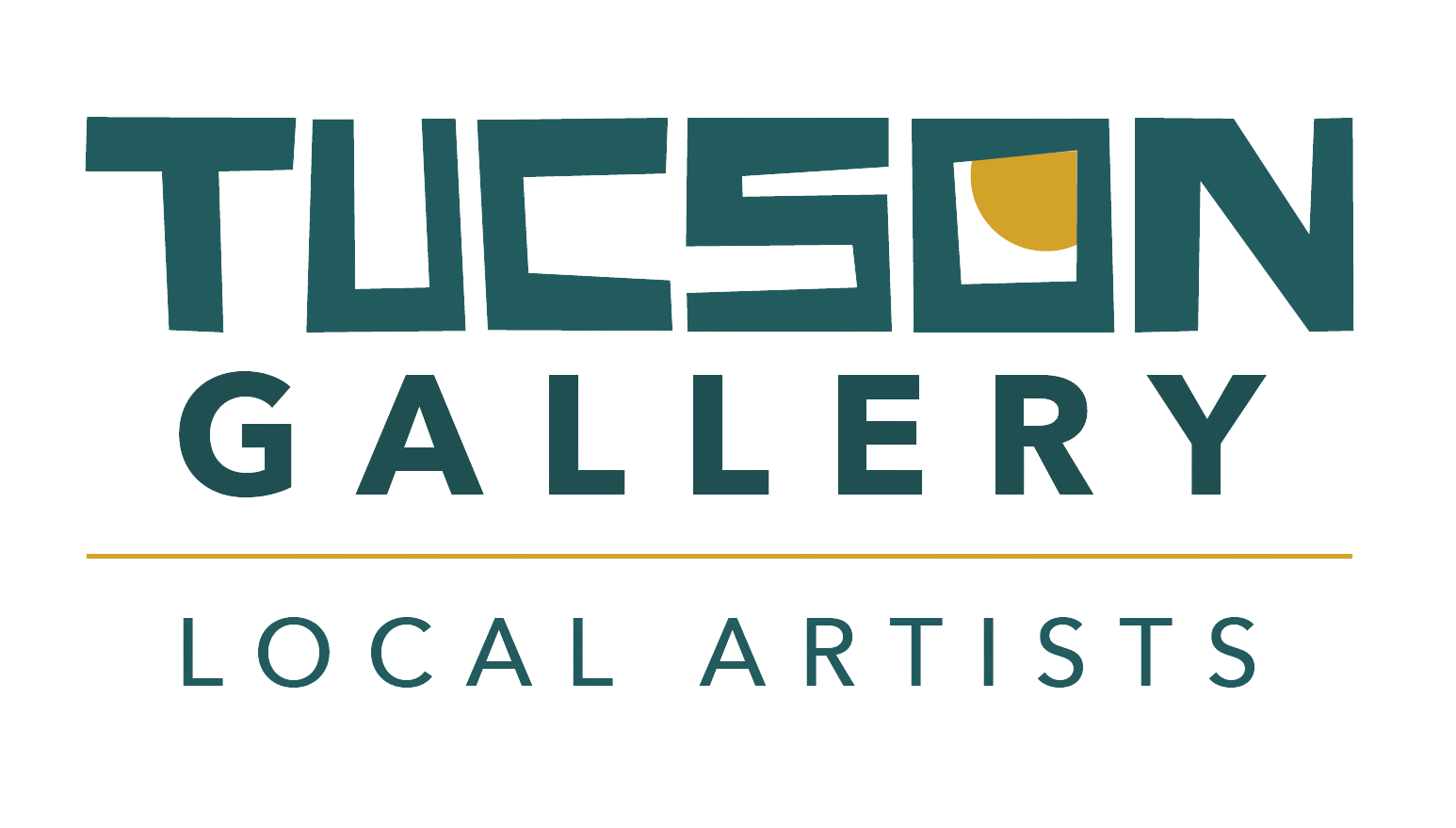Transcript (Unedited)
Tom Heath
I’m kind of excited about this. We’re having our very first Meet the Artist podcast. We’re inside the fabulous Tucson Gallery at the proper shops on Congress and Fifth Avenue and part of our series where we’re going to expose the world to our fabulous artists here in Tucson. And we get to launch this with someone who have gotten to know very well over the last couple of years. And we’re going to talk about art today, although we have talked about many different things over the last few years because you’re doing quite a bit. But Randy CF. Fletcher. Welcome to meet the artist.
Randiesia Fletcher
Thank you so much, Tom. Thanks for inviting me.
Tom Heath
It is our pleasure. If you’re not familiar, head over to our other podcast, Life Along the Streetcar and you can look up interviews we’ve done with DC and her husband Herman who are doing amazing things for sustainability, affordable housing and others within our Tucson community. But today we’re talking about art because you do all these projects and a lot of the way you fund these projects is by selling art.
Randiesia Fletcher
Absolutely.
Tom Heath
So when did you know you were going to be an artist?
Randiesia Fletcher
Well, I remember in 6th grade when the administration, they come and ask all of the children about what are you going to do when you get older? And I remember saying, well, I’m going to go into the army, I’m going to be the president and I’m going to be an artist. And so, no, I didn’t go into army, I went into the Marine Corps. I’ve been the president of my own company. And I knew then that I was going to be an artist. But that was short changed by the idea of I didn’t think artists made any money. And so at that time when I understood that I was an artist, we were homeless. And so how I was selling a piece of art, going to pay the bills. And so it was quickly just taken out of my mind that I’m not going to be an artist. And I said, well, I’m going to be an architect instead.
Tom Heath
This is in 6th grade and you’re homeless at this point.
Randiesia Fletcher
Yes, but around that time there was a lady named Don who took me shopping and she took me to an art store and she bought paint, brushes, lava, soap, a sketch pad that I just remembered the other day, a sketch pad, charcoal, pencils. She brought paintbrushes, turpentine and oil paint. And so I started painting and I started painting the faces of family and so the eyes and what the lips look like. And I was drawing also. And I just had this memory because I was sitting in the dark, drawing, and I couldn’t see what I was drawing, but I was just sitting in the dark. And I remembered the nostalgia of just sitting and drawing, and there were so many dark places at that time, but I always remember drawing, and it made me feel good. It was a place of escape. And so I started painting and writing as a place of escape for myself.
Tom Heath
I’ve talked to some other artists, and I think that is sometimes a common theme, that they use it to move themselves to a different level mentally, physically, emotionally. But I don’t know of anyone that has done that from such a stark beginning and created light in that way. Wow. Now that you’re a little bit more established, are you still using Lava soap?
Randiesia Fletcher
When I go to my uncle’s house, he has Lava soap there, and I always remember the smell. So it’s such a wonderful smell, but I need to buy some because it’s the thing that takes that oil paint right off your hands. And when I’m painting, I’m making a mess.
Tom Heath
So tell us about your art. That it’s I’m assuming that it’s oil paint.
Randiesia Fletcher
It is oil. So I use oil on canvas, and I paint eyes, and I paint family faces. I paint the stories that I imagine in my head and so they’re historical fiction, stories that I imagine in my head. And then I write the story and I paint or I paint and then write the story. But it comes together simultaneously where I’m imagining this person and their history and their lineage and where they’ve come from, and I’m painting that and almost like breathing and telling myself the story at the same time. And so I get lost in the psychosis where I’m just in this place with this person paintering everything about them.
Tom Heath
Wow. So this is not just representation on canvas. You’re writing the story out as well?
Randiesia Fletcher
Yeah, absolutely. So all of my paintings have a story that goes along with them.
Tom Heath
I knew they ought a story, but I didn’t know that they had an actual written story. I thought the story was in your head as you were creating with you. The story came first.
Randiesia Fletcher
Yes. Or it’s like chicken or the egg situation, but they’re written. So, like, whichever picture that I have up there is an actual story. So when people purchase paintings or when I do presentations, I situate the painting, and then I tell the story. And so it’s my favorite. It’s the presentation part of the story that excites me so much. To see the person in their eyes I’m talking about the painting. To see that person in their eyes and to understand, like, I’m in their head. It’s like a second person.
Tom Heath
I love that understanding. And you’ve kind of grown now into teaching as well, right? You’re helping young artists get going.
Randiesia Fletcher
Oh, yeah, absolutely. So I’m a teaching artist. So teaching artist doesn’t necessarily mean teaching other people art, necessarily. But I’m an artist teaching. And so as an artist teaching, those social issues that I paint are the ones that I’m able to teach. So if we’re talking about recovery and repair like we’re doing at the University of Arizona. Right now, I’m teaching art for people to write down their feelings of how do they process grief. So we write something, and then we’re feelings. But the artist that I’m training is my daughter, the most in oil. But my sons are training artists as well, but they have different mediums, like jewelry, so they’re big jewelry makers. And my older son is a painter, too.
Tom Heath
I did not know that you had all this artistic energy flowing through your house.
Randiesia Fletcher
Yes, it’s the whole family, and Herman does the audio visual, and that’s art within itself.
Tom Heath
I’ve seen his work as well, and I don’t want to get too far afield from the art component, because that’s what we’re here really, to discuss. But this funds really interesting projects in our community. Can you just briefly kind of touch upon your urban forest?
Randiesia Fletcher
Yes. So the urban forest project started as a community project to build a food forest. And so our goal was to house individuals on a property that Herman and I own and then create a food system where people who were challenged with food security and housing insecurities. I wanted them to have housing, and I wanted them to be able to have food in the same place so they wouldn’t have to spend their money elsewhere. So, like today, I was able to go out into my own yard, and before I came here, I’m cooking dinner. I’m cutting down all the collard greens, and I’m just putting it in a pot. So that saved me a lot of money, because one bushel of collard greens are, what, a dollar 99 for, like, three big leaves? And so the same thing at the other properties where people can go outside with a little scissor, cut those greens, put it in a pot, and they’re able to eat, and then they don’t have to go spend the dollar 99. But no one buys one bushel of greens. You buy at least three bushels of greens,
Randiesia Fletcher
and so that’s six $8 that you’re able to save instead of spending. And you grew it in your own house. It’s not on the Dirty Dozen. It doesn’t have pesticides on there, and you took care of it and grew it yourself. And so that’s what we’re teaching people, to grow it and to eat from their own food lands.
Tom Heath
It’s such a serendipitous path that someone who at such a young age is facing food and housing insecurity finds art as a way of of bringing themselves emotionally and mentally through that, and now using art to find physical manifestations to help people through some of those same challenges. See, I know from the past, but I’m going to ask you, you’re a woman of faith. Is this important to you in your art?
Randiesia Fletcher
Absolutely. So I believe my relationship with God, it’s very important because I believe that the Holy Spirit talks to me and is a guide for me, and it was so many people of faith who helped support us along the way. And so I definitely honor God in the things that I do in my painting and my lifestyle. And I believe that we have to love our neighbor as ourselves, and that’s so important, for I would be very selfish to do nothing after so many people did so much for me. And so how can I do that? It’s by loving God with my heart, soul and light and then loving my neighbor as myself. And so how I treat myself, I definitely want to treat others as well.
Tom Heath
And someone else in your life, I know, has been a big influence, and he’s not here, so we can talk about him. But your husband yes, Herman. Tell us a little bit about your husband. And he’s not here, so you can be very candid.
Randiesia Fletcher
I could be very candid. Even though he’s on his way. Oh, my goodness. He’s right behind me.
Tom Heath
He shouldn’t have laughed. I was going to get the real dirt. Herman.
Randiesia Fletcher
Herman is my protector. I text Herman what happened, and so when I walked up and so, of course, he came here as soon as possible, and I can’t believe that he got here so fast. But Herman, he and I connect because we’re both PTSD veterans, post traumatic stress disorder veterans. He’s a combat veteran, and he was in the army, and I was in the better service, the Marine Corps. And of course, I’m always going to say that. So that’s our little running joke. And he’s probably smiling behind me right now because I think I’m superior because I’m a Marine. But we met in a common understanding that we’re both suffering with this PTSD thing from the military, and we were able to really just be each other’s counselors and understand that, hey, sometimes I’m down and I need to have the lights off, and I just need some meditation, some lavender, and then I know when he’s down. And so we’re able to support each other because we have similar backgrounds of homelessness abuse within the family. Both of
Randiesia Fletcher
us are disabled veterans, and so we’re able to really support each other on a common ground. He’s such a great support, too.
Tom Heath
So we are inside the Tucson Gallery. We just launched in December, and you are one of our very first featured artists, and you’re our first to launch this whole series of Meet the artists and tell us a little about your gallery experience. What does it mean to be in a gallery? Are you in other galleries?
Randiesia Fletcher
Yes, I’m in other galleries. What it means to be in a gallery is it’s a big honor for me, one, and it means representation. It means exposure for me because a lot of times, people don’t want to see Pan African faces in their galleries. What my experience has been in certain places in the Southwest, and so a lot of times, people have southwestern themes, which are beautiful, but that’s not my theme and that’s not my genre of painting. And so for a gallery to say, hey, we want your work in our gallery, it meant so much because it wasn’t just one type of painting in that gallery in which I see so much of. But you accepted this here. People are able to see what I see and understand the stories that I’m telling and to see it deeper than just sometimes. We’re so prejudiced against skin color and that black thing over there. But no, this is artwork and you are displaying this artwork high on your shelves right here. And that means the world to me. Representation matters and you’ve invited me to
Randiesia Fletcher
be here and I’m just be so grateful for what you have done. Thank you so much, Tom.
Tom Heath
It’s just mutual. We had a lot of respect for you and your work and what your work leads to. If you want to see her in DC’s work, you’re going to have to come down to the Tucson Gallery to see some of the live stuff here. And we are on a rotating schedule, so I can’t guarantee that it’ll be here forever. So you want to get down here quick. But you can also find it reproductions on our website, the Tucsongallery.com. And you have your own website with a lot more artwork than word displays. What’s your website?
Randiesia Fletcher
And so www dot Harris Fletcher.com that’s.
Tom Heath
Pretty easy to remember. And how do people follow you, like on social media? What’s your handles?
Randiesia Fletcher
My handles for instagram is Portraits of Sustainability. So that’s portraits underscore of underscore sustainability or urban Forest by HF. Or you could just look up my name Randy SIA Fletcher on Facebook.
Tom Heath
All right, well, we will link to all of those at some point through our, through our gallery page. We’ve got that up and running now, but excited to have this series every Thursday we’re going to have a different artist in some that are Tucson known, some that are up and coming, some that are established but maybe not here in Tucson yet and just really excited to share. And I just want to leave with a thought for someone who’s getting into an art situation. They’re in the 6th grade and they’re contemplating their future and they don’t have someone that’s going to come over and give them that nudge. What can they do internally? How do they get that nudge? If if they really want to be.
Randiesia Fletcher
Into this, don’t give up. I was just saying about stumbling blocks. If you have a stumbling block there, just learn how to run track and jump those hurdles. And so don’t let little things stop you and don’t let your own self doubt stop you. I think it’s very important that we persevere forward. I kept telling myself I’m fearfully and wonderfully made, no weapon form against me shall prosper. And I believe that wholeheartedly. And I’ve been so successful because of the self talk that I have done with myself since a child. And I haven’t been perfect with it. But it’s so important that I keep telling myself that I’m more than a conqueror and I can do all things. And that’s very important for me.
Tom Heath
Nothing to add? That’s where we’re going to end it. That’s perfect for DC. Thank you.
Randiesia Fletcher
Thank you. Thank you.


